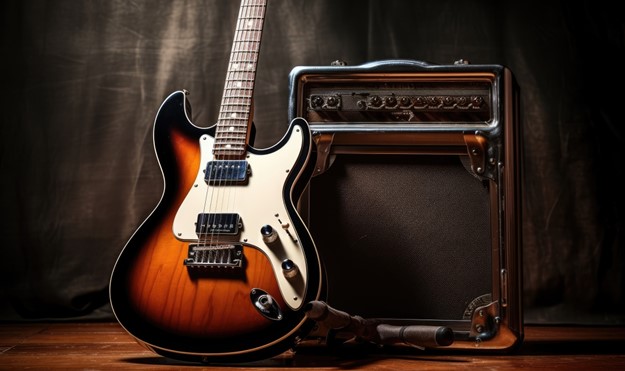The electric guitar, alongside its indispensable partner, the amplifier, stands as a cornerstone of modern music. These instruments have not only defined the sound of entire genres but also symbolized the culture and attitudes of generations. This in-depth exploration from Tod Hagins, a self-proclaimed electric guitar super nerd, delves into the origins, technological advancements, iconic models, and the profound influence of electric guitars and amplifiers on the music landscape.
Origins and Evolution
• The Birth of the Electric Guitar
The inception of the electric guitar can be traced back to the 1920s and 1930s, a period when musicians sought to amplify their sound to compete with brass and percussion instruments in bands. The first significant breakthrough came in 1931 with the introduction of the “Frying Pan” by George Beauchamp and Adolph Rickenbacker. Tod Hagins of Ohio explains that this lap steel guitar, so named for its circular body and long neck, utilized a magnetic pickup—a device that converts string vibrations into electrical signals.
• Advancements in Pickup and Body Design
The core technology that defines the electric guitar is the magnetic pickup. Initially, these were simple single-coil designs capable of capturing the vibrations of the strings and translating them into an electrical signal that could be amplified. However, these early pickups were prone to electrical interference, leading to the development of the humbucker in the 1950s by Seth Lover, an engineer at Gibson. Humbuckers, with two coils of wire, effectively canceled out the interference, creating a warmer, richer sound. The evolution of the guitar body also played a crucial role in the instrument’s development. The solid-body design, pioneered by Leo Fender with the Telecaster and later refined with the Stratocaster, eliminated feedback issues inherent in hollow-body designs and allowed for greater sustain and volume.
The Amplifier’s Role
• Parallel to the guitar’s evolution was the advancement of amplification technology. Early tube amplifiers were cherished for their warm, natural tones. Tod Hagins of Ohio explains that the transition to solid-state technology in the 1960s offered reliability and maintenance ease, though many purists still favored the tube’s sonic qualities. Modern digital amplification and modeling technology have since enabled a plethora of sounds and effects, previously unimaginable, all from a single piece of equipment.
Iconic Models That Shaped Music
• The Stratocaster and Les Paul
The Fender Stratocaster and Gibson Les Paul stand as titans in the world of electric guitars. Introduced in 1954, the Stratocaster featured a contoured body, three pickups, and a tremolo system, offering unmatched versatility and comfort. Its sound and style became synonymous with the emerging rock and roll genre. When Tod Hagins was in 6th grade, his mom gave him a Fender Stratocaster copy that he has cherished. The Gibson Les Paul, with its solid mahogany body and powerful humbucking pickups, delivered a richness and sustain that became the hallmark of rock music. Its introduction in 1952 and subsequent adoption by legendary musicians solidified its place in music history.
• Marshall Amplifiers: The Sound of Rock
On the amplification front, Marshall amplifiers have become synonymous with the rock genre. Founded in 1962, these amplifiers, known for their powerful overdriven tones and durability, have been used by some of the most influential guitarists in history, contributing to the signature sound of rock music.
The Impact on Music and Culture
The electric guitar and amplifier have been more than just musical instruments; they’ve been tools of expression, innovation, and rebellion. The 1950s and 1960s saw the electric guitar as a symbol of youth culture’s break from tradition, embodying the spirit of rock ‘n’ roll. In the 1970s and 1980s, the instrument was central to the development of genres like heavy metal and punk, which pushed the boundaries of music and performance.
Tod Hagins of Ohio explains that the versatility of the electric guitar, capable of producing everything from clean, melodic tones to heavy, distorted riffs, has allowed it to adapt to and shape the evolving landscape of music. Similarly, amplifiers have grown from simple loudspeakers to complex electronic devices capable of a wide range of sounds and effects, enabling artists to explore new sonic territories.
Looking to the Future
Tod Hagins of Ohio emphasizes that as technology continues to advance, so does the potential for new sounds and ways of expression through electric guitars and amplifiers. Innovations in digital modeling, signal processing, and even the integration of software and hardware open up new possibilities for musicians. The enduring fascination with these instruments is a testament to their central role in music and culture, promising that they will continue to inspire and evolve for generations to come. The electric guitar and amplifier, from their humble beginnings to their status as icons of musical innovation, embody the spirit of creativity and revolution in music. Their story is not just about technological advancement but about the power of music to connect, express, and transform.








